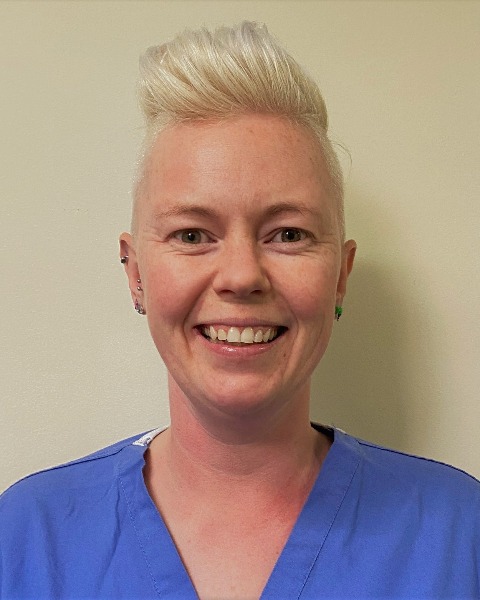Back
INFECTION/MICROBIOLOGY
Poster Session
(529) Stop bugging me; Auditing current inpatient nebuliser cleaning practise against hospital guidelines
Thursday, November 3, 2022
12:45 PM – 1:25 PM ET

Chloe Worger-Ridgley, BSc (she/her/hers)
Paediatric Respiratory Physiotherapist
Royal Brompton Hospital
London, England, United Kingdom
Presenting Author(s)
Background: Children with Cystic Fibrosis (CF) take numerous inhaled medications as part of their daily treatment regimen. These can be administered through a variety of nebuliser devices that can become contaminated by bacteria if not cleaned and dried appropriately after use1. Improper cleaning risks infecting the patient with bacteria and negatively impacting their health and disease trajectory2. A recent outbreak of pseudomonas aeruginosa (PsA) in one ward bay was potentially linked to staff disposing water used for nebuliser cleaning down a sink (rather than toilet) infecting other patients also using it. Evidence based cleaning recommendations for children with CF clearly set out the processes that should be followed to ensure effective decontamination of nebuliser devices3. Unfortunately, in hospital these guidelines are not always possible to follow due to lack of cleaning equipment and space for both washing and drying, and therefore a local “best practice” guide has been developed.
Methods: An anonymous online questionnaire to ascertain staff knowledge and adherence to the local cleaning guideline was sent to physiotherapy and nursing staff working on one paediatric ward. This was followed up by a reminder email two weeks later.
Results: 47 out of 100 responses.
68.9% of responses were from people who had worked with nebuliser equipment for over 3 years.
50% of staff reported to have received education on cleaning and 68% of staff using correct processes
42/47 staff reported they would never use equipment if it was still wet. (following guidelines)
46/47 staff reported they clean nebuliser equipment to prevent growths of bacteria.
15/47 staff reported they would discard used water down the sink. (not following guidelines)
27/47 staff reported they would discard used water down the toilet or in the sluice (following guidelines)
32/47 staff were able to list the correct cleaning process.
Conclusions: Despite only 50% of staff reporting to have received and education session two thirds were found to be using the correct process for cleaning. Most staff would not use wet equipment which is reassuring as air drying is effective in killing PsA3. Currently staff receive an education session when they start on the ward, and as 69% of respondents had been working with nebuliser equipment for over 3 years it leads to the belief that a ‘one off’ education session is not sufficient to ensure 100% of staff are fully adherent to correct cleaning processes, which is the expectation at our CF centre. A reaudit of staff knowledge is planned once the teaching package has been updated to include regular updates for experienced staff. It is also planned to investigate effective sterilisation processes on the ward as this step is currently missed due to lack of appropriate space and equipment.
Acknowledgements:
References: < ![if !supportLists] >1. < ![endif] >Cobben N, Drent M, Jonkers M, Wouters E, Vaneechoutte M, Stobberingh E. Outbreak of severe Pseudomonas aeruginosa respiratory infections due to contaminated nebulizers. Journal of Hospital Infection. 1996;33(1):63-70.
< ![if !supportLists] >2. < ![endif] >Emerson J, Rosenfeld M, McNamara S, Ramsey B, Gibson R. Pseudomonas aeruginosa and other predictors of mortality and morbidity in young children with cystic fibrosis. Pediatric Pulmonology. 2002;34(2):91-100.
Bell J, Alexander L, Carson J, Crossan A, McCaughan J, Mills H et al. Nebuliser hygiene in cystic fibrosis: evidence-based recommendations. Breathe. 2020;16(2):190328.
Methods: An anonymous online questionnaire to ascertain staff knowledge and adherence to the local cleaning guideline was sent to physiotherapy and nursing staff working on one paediatric ward. This was followed up by a reminder email two weeks later.
Results: 47 out of 100 responses.
68.9% of responses were from people who had worked with nebuliser equipment for over 3 years.
50% of staff reported to have received education on cleaning and 68% of staff using correct processes
42/47 staff reported they would never use equipment if it was still wet. (following guidelines)
46/47 staff reported they clean nebuliser equipment to prevent growths of bacteria.
15/47 staff reported they would discard used water down the sink. (not following guidelines)
27/47 staff reported they would discard used water down the toilet or in the sluice (following guidelines)
32/47 staff were able to list the correct cleaning process.
Conclusions: Despite only 50% of staff reporting to have received and education session two thirds were found to be using the correct process for cleaning. Most staff would not use wet equipment which is reassuring as air drying is effective in killing PsA3. Currently staff receive an education session when they start on the ward, and as 69% of respondents had been working with nebuliser equipment for over 3 years it leads to the belief that a ‘one off’ education session is not sufficient to ensure 100% of staff are fully adherent to correct cleaning processes, which is the expectation at our CF centre. A reaudit of staff knowledge is planned once the teaching package has been updated to include regular updates for experienced staff. It is also planned to investigate effective sterilisation processes on the ward as this step is currently missed due to lack of appropriate space and equipment.
Acknowledgements:
References: < ![if !supportLists] >1. < ![endif] >Cobben N, Drent M, Jonkers M, Wouters E, Vaneechoutte M, Stobberingh E. Outbreak of severe Pseudomonas aeruginosa respiratory infections due to contaminated nebulizers. Journal of Hospital Infection. 1996;33(1):63-70.
< ![if !supportLists] >2. < ![endif] >Emerson J, Rosenfeld M, McNamara S, Ramsey B, Gibson R. Pseudomonas aeruginosa and other predictors of mortality and morbidity in young children with cystic fibrosis. Pediatric Pulmonology. 2002;34(2):91-100.
Bell J, Alexander L, Carson J, Crossan A, McCaughan J, Mills H et al. Nebuliser hygiene in cystic fibrosis: evidence-based recommendations. Breathe. 2020;16(2):190328.
